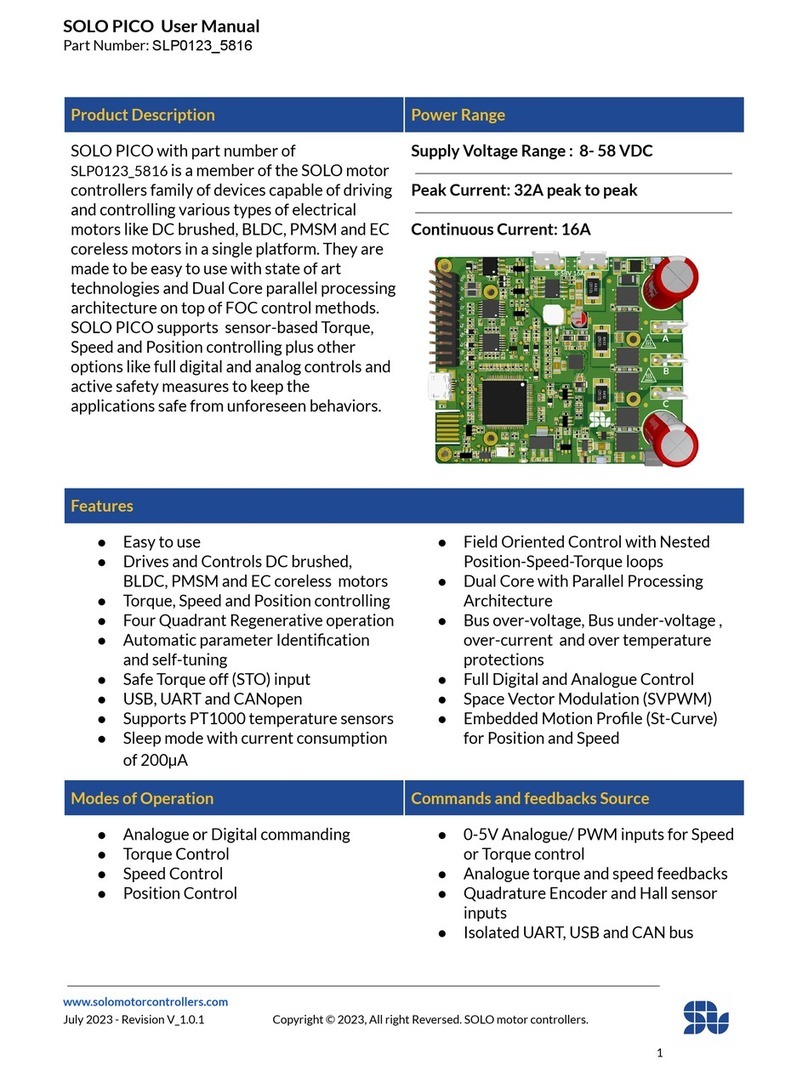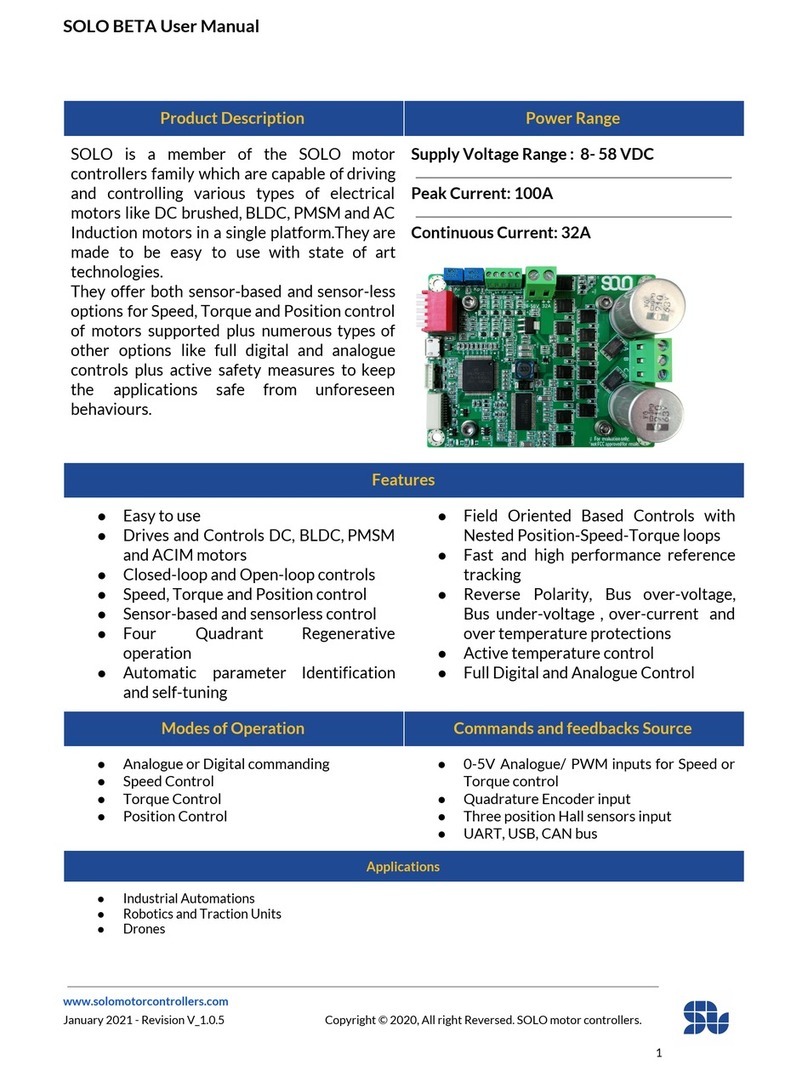SOLO MINI_v2 User Manual
Part Number: SLM0322_4020
www.solomotorcontrollers.com
May 2022 - Revision V_1.0.1 Copyright © 2022, All right Reversed. SOLO motor controllers.
10
Overview of the product
SOLO MINI_v2 is one of the products designed and manufactured by solomotorcontrollers, it
serves the purpose of being universal and easy to use for a wide range of users from different
backgrounds. This product is designed to support various types of electrical motors like DC
brushed, Brushless DC, Brushless AC or Permanent Magnet Synchronous Motors as well as AC
Induction and EC coreless motors up to 37V with the supply voltage and the continuous current
of up to 20 Amps, this will enable SOLO MINI_v2 to be utilized in wide range of products and
projects and eventually speeding up the developments and time to market for its users.
SOLO MINI_v2 can be commanded in two different ways, either by sending Analogue voltages
or PWM pulses which is called Analogue Mode, or totally by sending digital data packets through
UART, USB or the CAN bus with CANopen software layer which is called Digital Mode Control.
This will give a high flexibility in terms of system setup to the users and they can choose the best
way to wire up their systems using SOLO, The main features of SOLO MINI_v2 are listed as
below:
●Wide input voltage supply range from 8V to 40V
●The continuous output current of 20A, Max Current of 80A
●Capable of controlling DC, BLDC, PMSM and ACIM motors, EC coreless
●Dual Core with parallel processing architecture
●CANopen, USB and UART Communications
●Extremely fast F.O.C loop-rate up to 140kHz (7µs complete execution time)
●Over-current, Over-voltage, Over-Temperature, Under-voltage and Reverse Polarity
Protection
●Selectable output PWM switching frequency from 8kHz to 80kHz
●Automatic self-tuning and identification of Motor parameters
●Open-loop or Closed-loop Control modes
●Torque, Speed or Position control
●Advanced Sensor-less and Sensor-based Control
●Advance Field Oriented Control
●PWM and Analogue voltage input for Controlling Speed and Torque
●SVPWM modulation
●Encoder and Hall Sensor Input with +5V supply
●+5V/1A (5W) output to supply external modules
●Updatable Firmware
●Heatsink mounted on the back of the board to enhance the thermal behavior
●880µF onboard BUS capacitance






























